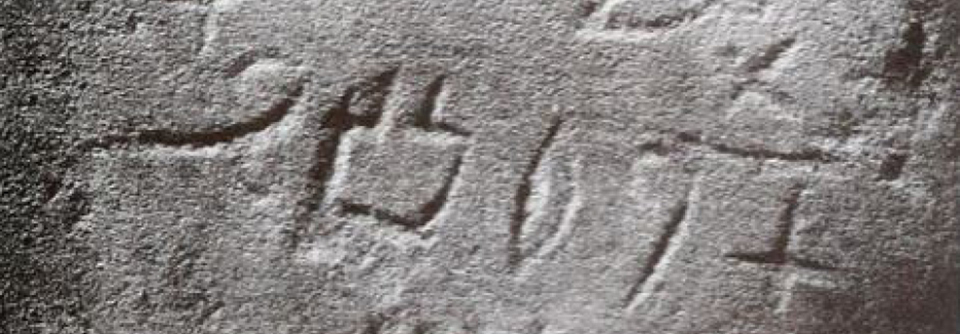
Volume 19, Issue 6 (February 5, 2017)
Words on Stone and Parchment
How the Bible Came to Us (3)
By Kyle Pope
Imagine teaching a class of little children to write for the very first time. You would start with the alphabet, but imagine having to teach them 15,000 characters! As difficult as that might seem it helps us appreciate the remarkable timing of when God chose to begin the process of revealing His written word to mankind.

In the earliest stages of God’s dealings with man He spoke directly to the heads of families (see Gen. 3:9; 4:6; 7:1; 13:14; 31:3; Exod. 4:4). For centuries there is no record of any written revelation of God’s will. From what we know about the earliest forms of writing there may have been a very good reason for this.
The First Writing Systems
The earliest form of writing was ideographic pictures and symbols representing ideas. Many of us have seen beautiful Egyptian hieroglyphic inscriptions with complex pictures and symbols. In Mesopotamia a similar system called cuneiform was used made from wedge-shaped symbols pressed into clay. The problem with picture writing was it required the writer to have artistic ability and know a large number of symbols. Some years ago Chinese, a modern ideographic script, had to reduce the number of characters it used from 15,000 to 5000! Such systems made it hard for common people to learn to read and write. Often the only people who were literate were professional scribes who kept records for kings and the wealthy.
The ancient world knew nothing of the conveniences we take for granted. There were no smart phones, laptops, or computers. All writing was carved into stone or clay, or marked onto surfaces that could absorb pigment. The Bible speaks of tablets of clay (Ezek. 4:1), but the first written revelation of God’s word (as far as we know) was on stone tablets. The Bible tells us God told Moses, “Come up to Me on the mountain and be there; and I will give you tablets of stone, and the law and commandments which I have written, that you may teach them” (Exod. 24:12).

Proto-Siniaitic inscription from Serabit el-Khadim in the Sinai Peninsula.
The First Alphabet
It used to be that critics of the Bible argued that this claim that God gave the law to Moses was not even possible because it was believed that at the time of Moses alphabetic writing did not exist. In the winter of 1904-1905 this argument was disproved. In the Sinai Peninsula, near the area where the Bible says God gave the Law to Moses archaeologist Flinders Petrie discovered inscriptions in a script now believed to be the first alphabetic writing ever known. This script, known as Proto-Sinaitic used a simple system of symbols that corresponds to the Hebrew alphabet used to write the Old Testament. An alphabet made it possible for the average person to learn these simple symbols corresponding to spoken language. At this key moment in human history God chose to begin the process of revealing His written word to man, making it accessible to all.
Unfortunately, God did not preserve His word through the centuries on stone. Most of God’s revealed word was written on dried animal skins stitched together and rolled into scrolls. The Law of Moses would be preserved in this form. Jeremiah was told, “Take a scroll of a book and write on it all the words that I have spoken to you against Israel, against Judah, and against all the nations, from the day I spoke to you, from the days of Josiah even to this day” (Jer. 36:2). What we call a book did not exist until the time of the New Testament or afterwards when single pages of parchment (dried animal skins) or papyrus (a dried plant flattened and glued together) were bound together in what was called a codex. Thousands of copies of handwritten texts of biblical books written on scrolls or pages from codices (the plural of codex) have survived through the centuries. It was with these tools that God revealed and preserved the Bible as we have it today. In our next study we will look at three steps involved in the revelation of God’s word in the Old Testament.

